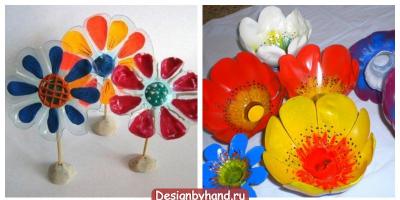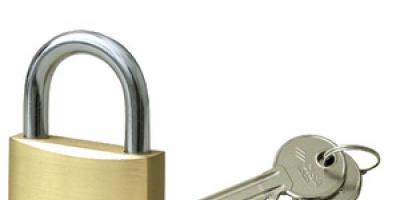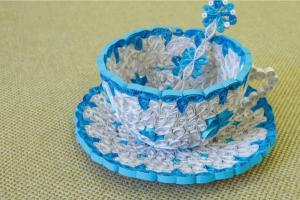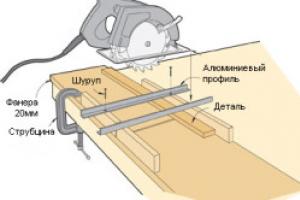Tsugunov Anton Valerievich
Reading time: 6 minutes
Not so long ago, the owners did not even have a question about which hose for gas stove choose. In Soviet times, these household appliances were tightly connected to the gas pipeline with steel pipes. It was simple, reliable, safe, but inconvenient: the slab could not be moved even a millimeter after installation. With the advent of the new product, it became possible to connect the stove using a flexible hose, thanks to which the device can be rearranged or temporarily moved if necessary.
Expert opinion
Tsugunov Anton Valerievich
Hello, friends!
Never use gas hoses without the appropriate markings, permission from Rostekhnadzor of Russia for their use, as well as certificates of compliance with SNIP and GOST. It is mandatory to have a flexible hose passport, which indicates the date of manufacture, service life and replacement of the hose.
It is advisable to inquire in advance with the gas company in your city about technical conditions requirements for methods of connecting gas stoves. This may refer to the maximum length of the liner, the way it is attached and the materials from which it should be made.
Requirements for gas hoses
- Flexible eyeliner– this is a complete product, any connections (couplings, extensions) are unacceptable. You cannot make one out of two hoses.
- The hose must be resistant to oils and not subject to corrosion.
- The hose must match the parameters of the gas used.
- Access to the flexible line must be provided (it cannot be placed in boxes, grooves, etc.).
- Hoses with a service life of at least 10 years should be used.
Maximum permissible length connections are specified by the gas stove manufacturer. For example, the European standard: EN14800:2003 – two meters. The maximum length of a certified gas hose is 7 meters.
There are no direct instructions on sizes in GOST!
How long are gas hoses?
The most common eyeliner sizes are as follows (in centimeters):
Types of hoses
Today, several types of hoses are used to connect a gas stove:
- oxygen;
- rubber-fabric;
- reinforced rubber;
- rubber with metal braid;
- reinforced with PVC;
- bellows.
It is worth considering them in more detail before choosing the right one.
Oxygen
Oxygen hoses were often used in Soviet times, since there were simply no other options for connecting via flexible hoses. Now this product fades into the background. Cost - from 60 rubles per linear meter without tips.
Positive traits:
- ability to withstand high pressure (up to 20 atmospheres);
- ease of installation;
- cheapness;
- does not conduct electricity;
- can be selected to suit any pipe diameter.
For the rest - a good option for having its advantages:
- high level of electrical insulation;
- wide range (easy to find for any pipes);
- Thanks to its softness, it can be easily trimmed to suit existing conditions.
You can install the product yourself, but it is better to contact a specialist.
With metal braid
It has an optimal ratio of price, quality and durability. Price from 140 rubles per 60 cm finished product. The hose is made of vulcanized rubber and reinforced with textile thread. The outer part is a metal braid.
The gas hose is similar to the water supply (for the toilet, taps, shower). You can distinguish it by markings: plumbing products have blue and red marks for cold and hot water, a yellow thread is woven into the gas braid.
One of the most common options, the popularity of which is associated with many positive qualities, including:
- high level of reliability;
- ease of installation;
- longer service life compared to rubber products;
- large selection of lengths and diameters;
- permissible temperature has a wide range from -35 to + 50 degrees;
- ease of use.
It is prohibited to use the product without installing a dielectric insert!
Expert opinion
Tsugunov Anton Valerievich
An all-rounder, I have been renovating and finishing premises since 2003, with more than 100 completed projects. I value quality more than quantity!
Gas services often recommend replacing old metal-braided hoses due to the inability to check the condition of the rubber under the braid. If it is impossible to confirm the relevance of the product’s service life by the passport, then I recommend replacing the eyeliner with a bellows or reinforced PVC one.
PVC reinforced
PVC gas line is one of the latest developments. It does not conduct electricity, does not break down like rubber, and is almost as durable as a bellows hose. It has 2 layers: an inner one made of black PVC, and an outer shell made of yellow PVC. Due to their novelty, not all gas services accept them for operation, so it is better to consult an authorized organization in advance. Price for 60 cm of product - from 140 rubles.

Properties of reinforced PVC hoses:
- flame retardant;
- dielectric;
- withstands hot plate contact test;
- quite cheap with a comparable service life;
- resistant to oil mist;
- operated under conditions of increased loads;
- meets the requirements of GOST R 52209-2004, GOST12.2.063-81, GOST12.2.003-91;
- guaranteed service life - 12 years, actual service life - more than 20 years;
- length from 60 cm to 5 m.
The bellows hose is made from of stainless steel, on top there is a PVC coating. This ensures that it will last a long time: the average lifespan is 25–30 years. The metal braid reliably protects from mechanical influences, and the polyvinyl chloride coating provides electrical insulation and resistance to chemicals. Thanks to the corrugated surface, the product bends easily.
Bellows gas hose has the following advantages:
- can be connected to any gas equipment: stoves, boilers, etc.;
- has connecting dimensions 1/2″, 3/4″, 1″;
- has excellent flexibility;
- withstands pressure up to 6 atmospheres;
- wide range of operating temperatures: from -50 to +250 degrees (installation outdoors is allowed; nothing will happen to it if it comes into contact with hot surfaces);
- able to withstand mechanical loads and aggressive influences environment, household chemicals;
- hoses comply with the requirements of GOST R 52209-2004, GOST12.2.063-81, GOST12.2.003-91;
- warranty service life - up to 15 years;
- service life – up to 30 years;
- is able to ensure the tightness of the system even under extreme loads, for example, during an earthquake.
The length of the bellows gas hose varies depending on the manufacturer.
With Emiflex, the eyeliner can increase in size by 2 times and has the following parameters (in meters):
- from 0.26 to 0.52;
- from 0.5 to 1.0;
- from 0.75 to 1.5;
- from 1.0 to 2.0.
And Eliteline hoses have a fixed length (in meters):
The only thing that can scare off a buyer is the price. But considering its durability, it is the most profitable purchase.
Do not use the hose without installing a dielectric insert!
Rules for choosing a gas hose
Some simple tips will help you choose a gas hose, save time and money and avoid troubles with energy leakage:
- Buy any products only in specialized stores, and do not forget to ask the seller for a quality certificate.
- You cannot buy Chinese hoses: they are thin and quickly become unusable. There are also many fakes.
- The slabs are connected only with those sleeves that have a special yellow mark. They cannot be replaced with plumbing ones. The latter are not designed for such loads and wear out in a few weeks.
- When purchasing, the eyeliner must be carefully inspected for damage.
- Select the size so that the product sags and does not stretch.
- Pay attention to the mounting methods - fitting or nut - select them according to size.
- The hose must be laid in an easily accessible place. It is not safe to hide it in a wall or under the floor.
- The bending radius should not be less than three times its diameter.
- The product must not be pulled, twisted, bent, or painted.
- Metal parts must be protected from condensation, which leads to oxidation of the material.
- You cannot connect steel elements (tips) with copper ones, this can lead to electrolytic damage to the product. Acceptable combinations are steel with steel, brass with copper.
- All connections must be tightened tightly, but without excessive force, so as not to damage the threads.
- A dielectric insert is installed between the tap and the gas hose, which prevents the accumulation of stray currents, which can lead to overheating of the braid, damage to the device, and melting of the rubber.
- rubber hoses (with and without sheath) – 5-year warranty, service life up to 10 years;
- PVC eyeliner – 12-year warranty, lasts up to 20 years;
- bellows gas hose - 15 year warranty, does not require replacement up to 30 years.
When installing the hose, use the following recommendations:
Gas line service life
After installing the hose, you should check its service life and remember the installation date. The product, depending on the type, is designed for a period of 5 to 15 years. It is important not to forget to replace it on time.
Guaranteed service life is indicated in the product passport and in the certificate of conformity.
Which gas hose is best?
- In terms of the ratio of technical characteristics and cost, the leader is the bellows gas hose; it is not for nothing that gas workers themselves recommend it. Don't forget to install the dielectric insert with this product!
- Next comes a PVC gas hose, it is less durable, but does not require electrical protection and is not destroyed by oil. Which gas stove hose did you choose?
Today, during the construction of buildings Special attention is devoted to water supply and gasification systems. They simply must be reliable and provide a high-quality, leak-free supply of water or gas to the end consumer.
For this purpose, various pipeline fittings, but it is also equally important to ensure high-quality connection of household appliances and various plumbing equipment on site to gas and water communications. For this purpose, flexible eyeliner has been successfully used for many years. What is a flexible gas line, what is a bellows line, and what types does it come in? Let's try to figure this out.
A flexible hose is a kind of hose with fittings or other elements at the ends for connection to pipeline systems and plumbing itself or household appliances. Using flexible hoses, as already noted, household appliances (washing and dishwashers, plumbing fixtures, faucets, gas stoves) to gas and water supply systems. In this case, not only the necessary working medium (water or gas) is supplied, but also the mobility of household appliances is ensured - it is possible to move them in such a way that it is most convenient to use them, there is no connection to the risers. In addition, the installation process itself is quite simple, convenient and fast, so that problems almost never arise during installation, provided, of course, that a specialist is involved in this - after all, as you know, a gas leak or a water pipe break are serious things that lead to sometimes to irreparable consequences. 
All types of flexible connections are divided depending on the type of working medium supplied into water connections and gas connections. However, their differences lie in the materials used to make the eyeliner. The connection for the mixer can be made of ordinary rubber, for example, with aluminum or stainless braid, but for gas connections, other materials are used - special polymer hoses without aluminum in the braid. Also, water and gas connections may differ in the way the “hose” itself is attached to the end fittings - fittings, nuts, fittings: a flexible water connection is usually connected by rolling, and a gas connection is usually connected by argon-arc welding. But in any case, there may be other connection options that are not tied to the purpose of the flexible liner. However, the main classification of flexible hoses is based on the type of construction, namely rubber hoses (or sleeves) and bellows hoses. Let us consider further in more detail design features each type of flexible liner.
Rubber sleeves
This type of flexible hose is a rubber (rubber) or polymer hose, which, to protect against external influences, is braided quite tightly with metal wires or threads, while stainless steel or aluminum is often used as the braiding material. At both ends of this type of flexible hose, metal bushings or fittings are installed, which in turn are crimped with a metal nut. The tightness and reliability of the rubber flexible hose depends on the quality of the connection between the braided rubber hose and the metal bushings. Therefore, it is necessary to purchase rubber hoses only from well-known, time-tested manufacturers. Note that such a gas liner has a low price, affordable to almost all consumers, but at the same time, in terms of strength and performance characteristics, it is significantly inferior to another type of flexible liner - bellows. On the contrary, with regard to the use of water liner in public utilities, then a flexible water supply with a metal braid is today the most widely used, fully meeting all standards for the operation of plumbing. 
Bellows eyeliner
A flexible bellows-type hose, in principle, is a metal sleeve made in the form of a corrugation with folds - a bellows metal hose, which allows you to bend and compress the hose without any problems. The bellows liner, unlike its rubber “brother,” wears out much less, is more reliable, resistant to mechanical stress and effectively protects household appliances that it connects to the pipeline from breakdowns. Thus, the flexible bellows connection also increases the safety of using household appliances connected to water and gas systems. Naturally, the cost of flexible bellows-type hoses is significantly higher than the price of braided rubber hoses. But you must agree that the advantages described above that bellows eyeliner provides are worth the money. Flexible bellows hoses are becoming increasingly popular and are gradually replacing rubber hoses. For example, the number of sales of bellows gas connections wholesale and retail in Moscow has already significantly exceeded similar figures for rubber hoses in metal braid. Flexible bellows-type gas supply is rapidly conquering the plumbing market.
At the same time, we should not forget that with the growing popularity of bellows eyeliner, the number of low-quality, counterfeit products is also growing. Therefore, as in any other case, when choosing flexible eyeliner, you should pay attention to the reputation of the company producing these products and, of course, purchase flexible eyeliner only from well-known and trusted suppliers, regardless of whether you want to buy flexible eyeliner wholesale or retail. Attention! The use of counterfeit, falsified and low-quality products can lead to tragic consequences. Don't put yourself and the people around you at risk.
The Armagaz group of companies offers to your attention flexible gas connections from the following manufacturers:
A bellows connection for gas is one of three types of flexible hoses for connecting to gas appliances, which replaced the steel pipe. Movable flexible hoses also include rubber-fabric and reinforced hoses, which, unlike steel pipe, not only became easier to install, but also made it possible to move gas appliances in the kitchen during cleaning or repairs.
A stainless steel bellows hose is used to connect a gas boiler or water heater. It is also possible to connect a gas stove with its help, but using a special one.
I propose to consider in detail the advantages and disadvantages, material of manufacture and application, reliable manufacturers, as well as the features of connecting a flexible bellows hose to a gas boiler, water heater or.
Features of the use of bellows hoses for gas
All currently used flexible hoses are made of different materials, have different technical characteristics and service life, but they have common positive traits:
- ease of installation;
— ease of installation;
- ease of use.
Types of bellows hose for gas
The bellows hose for gas is recognized as the most convenient and safe of all types of flexible hoses. This gas line is made of stainless steel and polymers with corrugated top layer. Due to the fact that the material contains wire, the hoses can withstand high pressure (up to 6 atmospheres).
Bellows hoses for gas have the property of maintaining their elasticity and original strength, despite the fact that they are constantly compressed or extended in length. To connect to gas equipment, bellows hoses use a threaded fitting or nut made of brass.
There are several types of bellows hoses:
- simple, having a round cross-section;
— hoses protected by a metal sleeve;
— hoses with polymer coating;
— a modernized hose with a valve that is activated to shut off the gas (when the temperature rises to high values).
How to choose the right gas bellows connection for a boiler or column
What should you pay attention to when buying a hose? The most important condition not to make a mistake when purchasing is to visit a specialized store, where competent consultants will help you choose a high-quality product and not a cheap Chinese counterfeit.
Any gas equipment in a house or apartment is subject to special risk. An incorrectly chosen one can lead to various situations, even an explosion.
The first thing you should clarify with the seller is the type of hose connection. Immediately discard the option where the corrugation is glued to the hose; this type of product will not last you long. The hose body must be either welded or one-piece.

Connecting a gas boiler with a flexible bellows hose 3/4′
Any bellows liner has at the ends threaded connection for connection to gas appliances. These connections differ in thread diameter and are:
— ⌀ 15 mm or 1/2′;
— ⌀ 20 mm or 3/4′;
— ⌀ 25 mm or 1′;
— ⌀ 32 mm or 1 1/4′.
Typically wall and floor gas boilers on their side they have a threaded fitting with a diameter of 1/2′ or 3/4′. Therefore, the bellows hose must be selected with the same diameter as the gas fitting on the boiler or gas water heater.
For example, for wall-mounted gas boilers "" or "" you need a bellows liner with a diameter of 3/4′, and for a floor-standing gas boiler "Conord" or "Mimax" a bellows liner with a diameter of 1/2′ is suitable.

Stainless steel bellows liner “nut-fitting”
In addition, the ends of the hose have internal or external threads. Gas supply comes in two types of connecting threads:
- “nut-nut” (both internal threads);
- “nut-fitting” (one end with internal thread, the other with external thread).
Therefore, when choosing a hose, you need to know what thread is on the gas appliance and what is on the gas pipe(faucet). If the diameters are different, then this can be solved by purchasing a threaded adapter, for example.
Manufacturers and prices
Bellows hoses for gas on our market are represented by such well-known brands as “Hudrosta”, “Lavita”, “Emeflex”, “Beka” and others. But now, due to the rise in foreign currency exchange rates, we are looking for analogues of these products, manufactured by domestic companies and well-established in our market.
Such companies include, first of all, the TuboFlex campaign, which produces bellows hoses for gas at the Uglich Polymer Plant. Let's look at several examples of different lengths, connection methods and prices.

Bellows liner Tuboflex
The bellows hose for gas “TuboFlex IS 100668” is suitable for gas stoves, boilers, water heaters, and other equipment with a gas supply system. This hose has a flexible design and long service life. Made of stainless steel, equipped with protection against mechanical damage. Hose length 2 meters, nut thread half inch, weight 310 g, nut-to-nut connection method, dimensions 240x330x35 mm. Price 667 rubles per piece.
Bellows hose for gas “TuboFlex IS 100692”: thread - 1/2 inch; length - 2 meters; weight 310 g; dimensions: 240 x 330 x 50 mm; “nut-to-fitting” connection method. Product price 771 rub. a piece.
Advantages of bellows gas hoses:
— reliability;
- safety;
— flexibility of structure;
— sufficient density;
— ability to withstand temperatures from - 50 to + 280 ° C;
- ability to withstand high pressure;
— the ability to stretch in length 2 times;
— ability to connect to any gas appliance;
— long term operation.
Disadvantages of bellows gas supply:
— formation of microcracks on the surface over time;
— the need to install a dielectric coupling when connecting a gas stove with electric ignition;
- high price compared to other types of hoses.
As for the work and installation of connecting a flexible bellows hose to a gas boiler or water heater, this should only be done by a professional. Therefore, we do not give any recommendations to those who believe that any master can easily cope with this. Any gas equipment must be connected by a specialist who has permission for this type of work. And here it no longer matters what type of hose will be used: bellows or oxygen. Let's watch the video.
Responsible moment in operation gas equipment is its connection. Therefore, it is worth taking a serious approach not only to the connection process itself, but also to the choice of gas hoses that allow this to be done in practice. It should be borne in mind that in this case it is necessary to use special connections, known as bellows hoses.
What the bellows itself is can be read in detail on Wikipedia. To connect gas equipment, flexible hoses are used, which are bellows hoses, ensuring the tightness of the connection. From the point of view of the design of these connections, bellows-type hoses can be characterized as follows:

As for the specific use of bellows gas hoses, they find their application in connecting almost any type of gas equipment: mobile and permanently installed.
How to choose the “right” bellows hoses?
Bellows hoses are quality products, unless, of course, you purchase cheap products of this type from China. At the same time, their purchase is associated with some problematic choice, which is associated with the presence of gas connections on the market various types. There is a great variety of such elements, so it is necessary to take into account some important points when choosing bellows hoses:

Manufacturers
EMIFLEX S.p.a. is a company from Italy that occupies a leading position in Europe in the production of gas pipes. Bellows hoses from this manufacturer are certified in Russia by an organization such as Rostest. There is also appropriate permission for this product from the Gosgortekhnadzor of the Russian Federation. Specifications Bellows liners under the EMIFLEX brand are as follows:

Existing standards in Europe limit the length of the gas line to two meters, and for the production of a metal hose it is envisaged to use only AISI 316 L stainless steel.
Another popular manufacturer from Italy is IDROSAPIENS S.r.I. Its products are certified in the Russian Federation, and they fully comply with EN 14800 (Europe) standards established for gas bellows. The IDROSAPIENS gas supply is designed for a service life of up to 15 years, which is not final, since further operation of the bellows is quite possible, which is due to the technical condition of the product at the end of its operational period under warranty.
If you are interested in budget bellows hose models, then you should turn to products from Belarus, certified in the Russian Federation, which are produced by ZURFLEX. The quality of the products of this brand is quite comparable with Italian products of this type, but they can be bought much cheaper.
Counterfeit
If a product is popular, it is usually counterfeited, and the place where counterfeits are produced is predominantly China. Bellows hoses are no exception in this case.
 At the same time, it is worth dividing Chinese hoses for gas equipment into two categories. The first category includes those products that are officially produced in China at the request of companies from Europe interested in reducing the cost of their goods. Everything is fine here with quality.
At the same time, it is worth dividing Chinese hoses for gas equipment into two categories. The first category includes those products that are officially produced in China at the request of companies from Europe interested in reducing the cost of their goods. Everything is fine here with quality.
At the same time, there is a second category of gas supply produced by pirate methods, which has a catastrophic effect on its quality. Low-quality counterfeit products reduce the level of safety, since their use can lead to gas leaks. It is also possible that these products contain harmful chemicals or radioactive substances.
If earlier the price was the measure of quality, now everything has changed. The original and the counterfeit may well cost the same, so you need to be especially careful when purchasing a gas line. Conduct a visual inspection of the product and require certificates, at least in the form of photocopies. If you are refused to provide these documents, then do not risk buying bellows hoses from this seller.
Installation rules

Hose drawing

Gas equipment in the house, which includes stoves and gas heating boilers, are equipped with hoses for supplying fuel. Most often they are painted bright yellow. It is prohibited to work with them yourself; such activities are carried out by special services. But the choice and purchase of this element often lies on the shoulders of the end consumer, so it is important to consider what a flexible liner is.
Types of gas hoses
If we consider it, we should divide them into three varieties, which differ in the material of manufacture. Thus, bellows eyeliners can be found on sale; rubber sleeves, which are equipped with a metal braid; as well as rubber-fabric elements. Flexible liner based on rubber-fabric sleeves is the softest; this quality can be called negative, since mechanical rigidity is at a minimum level. The advantage is that rubber products are not capable of conducting electricity. Hoses with metal braid are more common among consumers today. The reason for this popularity is expressed in low cost. This type of gas hose differs from hoses intended for water in that a yellow stripe can be found on its surface. Flexible bellows-type hose is characterized by maximum rigidity and reliability among other types of hoses. For such a product you will have to pay the highest price; regulatory documentation recommends the installation of products of this particular type. This is due to the fact that such material copes excellently with the impact high pressure, which is created by the gas flow.
What you need to know before installation

You can choose a flexible liner with certain characteristics, but in any case the diameter should be more than 10 millimeters. This is explained by the fact that modern gas equipment has high power, and therefore requires high fuel consumption for efficient operation.
Installation rules

Before proceeding with the installation of a flexible gas supply, it is necessary to shut off the gas pipeline. If we are talking about installing new gas equipment, then it is first necessary to dismantle old device, if necessary. At the next stage, the gas hose is installed; the technician must check the tightness of the existing connections, which will help eliminate the possibility of gas leakage. The new device is installed on the surface level, and then the functionality is checked.

When installing a flexible gas line, it is important to follow some rules; one of them involves installing the equipment at a distance of 4 meters or less from the rigid gas pipeline. There must be a dielectric insert between the flexible hose and the gas tap. For flexible hosing of household gas equipment, all three types of hoses, also called hoses, can be used. Rubber-fabric ones provide the highest degree of safety for gas equipment. On the pipe through which gas will flow to residential building, a positive electrical potential is applied. This is necessary to ensure that the pipe, which is located in the soil, does not corrode. At the entrance to the living space, the pipe has a dielectric insert, and the risers are not at potential.

When installing a flexible gas line, one cannot ignore the possibility that current will flow through the bellows or metal braid that is located at the base of the rubber hose. This can be dangerous for a hose that is braided. The cross-section of the wire is very small, this indicates that it will be high. In this case, you need to be wary of the fact that the hose braid will heat up like a spiral. When installing a flexible connection for a mixer, it is recommended to use a real dielectric insert. Most often it is made of plastic or has metal threads on both ends. Experts advise purchasing a bellows metal hose with yellow dielectric insulation, which is applied on top of the metal. It is best for the consumer to avoid bare sleeves. Manufacturers apply the coating for aesthetic reasons to make the surface of the hose easier to clean. However, thanks electrical characteristics of this coating, it prevents the occurrence of current in the sleeve if it touches the riser.
Nuances of installation work

It is worth remembering that flexible gas supply must be installed only by specialists. The hose should not be bent; if such a need arises, care must be taken to ensure that the radius does not reach the minimum level established by the documentation. Before the nuts are connected to the consumer, the wiring must be configured to the required configuration. The wiring should not bend in the area that is located closer than 7 centimeters from the union nut. This is true if it is connected to a gas appliance. The flexible reinforced line should under no circumstances be stretched; the hose should not be twisted. If there is a need for use, they should be used exclusively with flat gaskets. In order to eliminate the possibility of breakthrough of gaskets, do not overtighten the nuts. If damage is noticed, the entire unit should be replaced.
What else you need to know about bellows eyeliner
Today you can purchase a flexible one in a store of relevant goods; this also applies to bellows eyeliner, which, although expensive, has found its popularity among consumers. This product is a corrugated hose made of stainless steel. At the ends there are fittings made of stainless steel. Such a line must be fixed to the gas inlet pipe or equipment using union nuts. Be sure to use metal gaskets, which must be soft, this includes aluminum or copper. Special plastic can also be used as a gasket material.
Such a flexible liner may have corrugation and fittings made of different materials. However, experts recommend purchasing products that are entirely made from the same base. This requirement is due to the fact that welding different metals can cause an electrochemical reaction, which contributes to the destruction of the weld. Such a connection cannot be called strong.
Conclusion
Experts recommend paying special attention to those pipes in which the fittings are soldered with silver or tin. They will not be durable and strong, like those in which the fittings are glued. The bellows liner can withstand pressure up to 6 atmospheres, and the elongation of the product can be 100%, this indicates that the bellows can be easily stretched when carrying out installation work up to double magnification.








